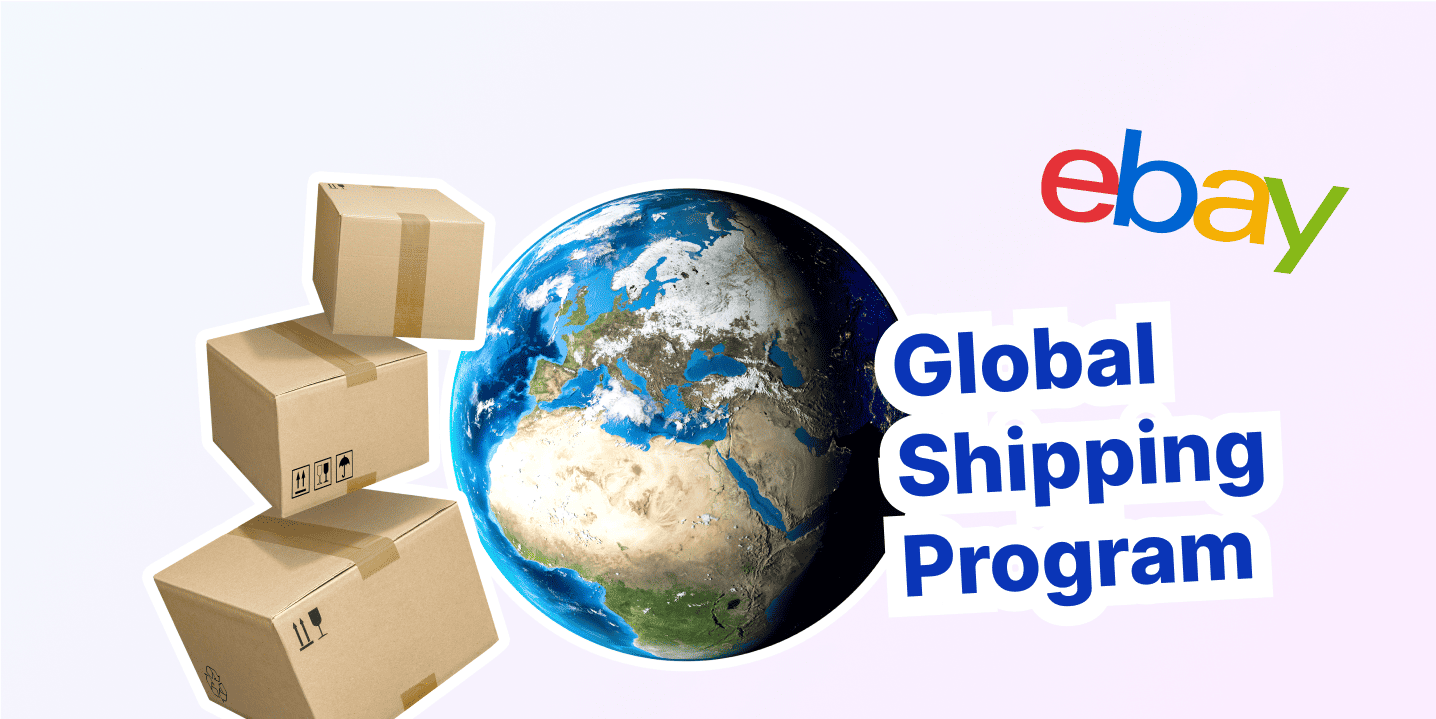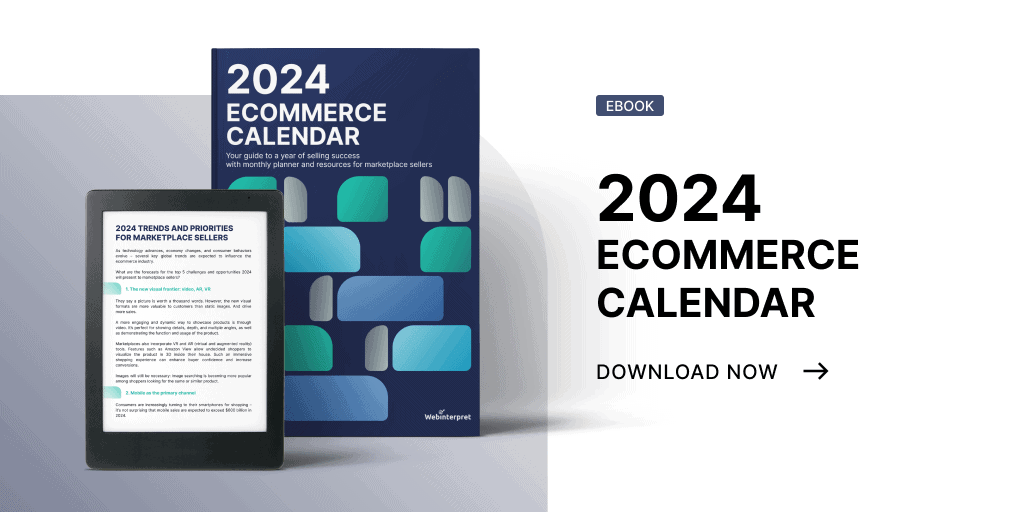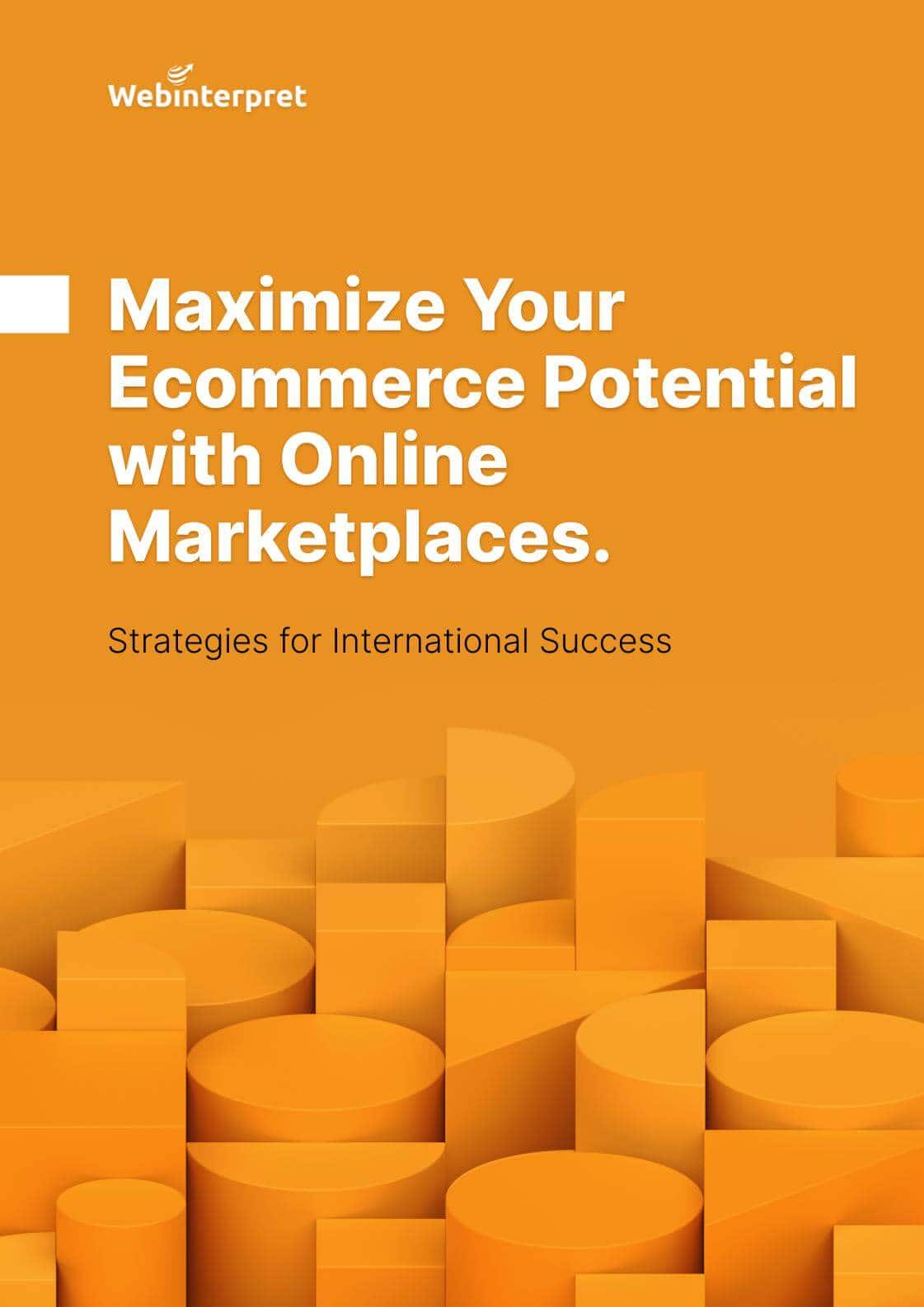
eBay Global Shipping Program (GSP): key facts & FAQs
This post contains key facts & FAQs about the eBay Global Shipping Program (GSP) to help eBay sellers build their optimal international shipping strategy.
According to eBay, GSP makes your items available to over 60 million buyers worldwide. Thus, with cross-border ecommerce on the rise, eBay sellers can strategically expand their customer reach on international markets.
International shipping is a core aspect of cross-border trade. Whether you’re already selling to foreign customers or thinking of doing so, this article will help you decide whether GSP is the best choice for your business.
Learn 7 ecommerce shipping practices! Download our FREE practical checklist & tips for easier reading and sharing with coworkers.
What is the eBay Global Shipping Program (GSP)?
The eBay Global Shipping Program (GSP) allows a seller’s listings to be shown to eBay buyers across the globe. Through GSP eBay manages the international shipping and customs processes, i.e. automatically calculates the international shipping cost, duties, taxes and estimated delivery dates upfront (and adds them to the listing which the international buyer can see).
Under GSP, sellers only need to send their eligible items to a shipping center located in their own country. From there on, eBay’s service provider manages the international delivery and is responsible for the package until it reaches the buyer’s door.
According to eBay, GSP makes your items available to over 60 million buyers worldwide. Further, it gives you protection from negative / neutral feedback and control over which items you want to ship through the program.
AI Seller Tools for eBay Sellers: FREE Download
Can all eBay sellers use GSP?
To use GSP, sellers need to have a seller rating of Above Standard or higher. There are also some criteria to meet:
- Items physically located in the US / UK (the seller’s country)
- Items listed for sale on eBay US / eBay UK
- The item must not be ineligible, illegal, hazardous, subject to export restrictions, prohibited by eBay or prohibited by GSP. Check the eBay User Agreement (UK version here), the International trading policies (UK version here) and FAQs for more details.
- Non-managed payments sellers must accept PayPal as a payment method
- Delivery address requirements
- Package (weight / dimensions) requirements.
Restrictions on the size, weight and value of parcels vary, depending on the destination country.
There are further restrictions similar to regular eBay listings e.g. on the type of items that can be listed and shipped. For more information on restrictions, go to eBay’s GSP help page.
Watch the video below to see how the Global Shipping Programme works (based on the UK example).
What are the benefits of the eBay Global Shipping Program?
The GSP helps eBay sellers take advantage of international ecommerce by making shipping abroad quicker and easier. This way sellers who would otherwise not decide to sell internationally can get started very easily.
For sellers, the GSP program is very convenient. They don’t need to fill out customs forms, calculate duties/taxes or organize international deliveries. They’re also protected by eBay (when the items reach eBay’s warehouse): if their items are lost/damaged on the international part of their journey, sellers are still guaranteed 5 stars for shipping time and protected from negative shipping feedback.
For buyers, GSP gives access to more international products. The full cost including shipping, duties and taxes is provided upfront. Shipping and customs clearance should be fast and easy as all duties are declared and paid in advance. Buyers pay the total of:
- The seller’s usual selling price
- The seller’s usual domestic shipping (if not free)
- eBay’s calculated international shipping
- eBay’s calculated import duty and taxes.
Some buyers may avoid GSP listings if they make some products too expensive. Others appreciate the advantages of GSP such as good access to international products, fast delivery and the convenience of paying import charges upfront.

Benefits of eBay’s GSP
- Making eBay items available worldwide in a convenient and straightforward way
- In the event of an item being lost or damaged during international shipping, eBay Money Back Guarantee cases will be resolved in the seller’s favour (that won’t affect your seller performance standards)
- Free domestic shipping to the shipping center: sellers will automatically receive 5 stars for shipping costs in their detailed seller ratings
- Priced domestic shipping to the shipping center: if sellers receive a rating below 5 stars for shipping costs, it won’t count against their seller performance standards
- Improved rating for shipping time when shipping on the same business day
- Removal of any negative or neutral feedback that can be attributed to GSP from item handling during international transit
- Automatic order tracking.
Shipping and tracking items under GSP?
When shipping items to eBay’s shipping center, include tracking details and the reference number on the label. When you create shipping labels on eBay, it’s done automatically.
The uploaded tracking number is then converted to a Global Tracking number that can be used to track the item until delivery.
Shipping exclusions & preferences
If you have shipping exclusions in place (to states, territories, countries or regions that you don’t ship to), they’ll still apply to eligible listings under the Global Shipping Program.
If you want GSP to override your shipping exclusions, you can do this in the Global Shipping Program settings section.
Additionally, you can choose a select group of countries you’d like to use GSP for and then use your preferred shipping services for sales to other markets.
GSP allows you to tailor their shipping strategy.
Restricted categories and prohibited items
Due to export limitations and restrictions, items listed in a number of categories can’t be shipped through the Global Shipping Program, e.g. Business & Industrial > Heavy Equipment, Health & Beauty > Fragrances or Home & Garden > Fresh Cut Flowers & Supplies.
Furthermore, items prohibited on eBay, or that don’t follow eBay’s International trading policy, can’t be sold through GSP.
Does GSP handle returns for products shipped?
GSP doesn’t handle returns so sellers have to deal with returns on their own, e.g. by writing off the cost for low-value items or using international parcel carriers for high-value items. They can consider utilizing parcel forwarding or return handling services.
What are best practices when using the Global Shipping Program?
To attract more international buyers when using the Global Shipping Program, follow these best practices:
- Offer free domestic shipping to get an automatic 5-star detailed seller rating for shipping cost
- Specify either same business day or 1 business day handling time and upload tracking information within 1 business day of receiving cleared payment to improve seller rating for shipping time
- Add your international return policy to your listing (if different from your return policy for domestic buyers)
- Create a shipping label on eBay to have your tracking information uploaded automatically (otherwise, be sure to upload it)
- Specify the package’s weight and dimensions in your listing. Add the item’s country of manufacture (if known) for quicker customs processing
- Ship all items in a single order in one package (if possible)
- Ship the item only after the buyer has paid.
Conclusion: Will GSP guarantee more international sales for your eBay store?
The eBay Global Shipping Program is a very convenient shipping solution for international eBay sellers.
If you don’t sell internationally yet, GSP is a convenient and easy way to start exploring cross-border selling.
If you already sell internationally, GSP offers you the opportunity to add new countries to which you don’t want to ship yourself. You can easily tailor your GSP Program by choosing which countries to use GSP for and which to ship to directly.
About Webinterpret
Webinterpret supports merchants selling on big, international ecommerce platforms, such as eBay and Amazon. Our AI-based solution enables selling more effectively with automated listing localization, marketing, and logistics (shipping and returns).
By giving your foreign customers a full end-to-end local shopping experience, Webinterpret improves your conversion and helps establish your business on a global scale.
Our marketplace offer is constantly expanding – if you want to grow your online sales, feel free to contact our sales experts. They will help you analyze your international sales potential and choose markets that will offer you the best possible return on investment.

Learn how online marketplaces can help your ecommerce business succeed!
Related Posts:
Ecommerce Newsletter
By clicking the “Subscribe now” button, you agree to receive our monthly e-mail newsletter and regular marketing and commercial communications by email from Webinterpret regarding marketing trends and our digital marketing services. You confirm that you have read and agreed to Webinterpret’s Terms of Service and Privacy Policy.




